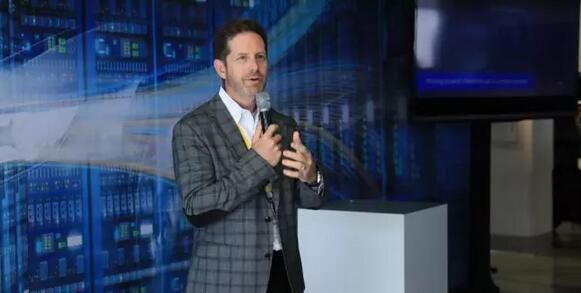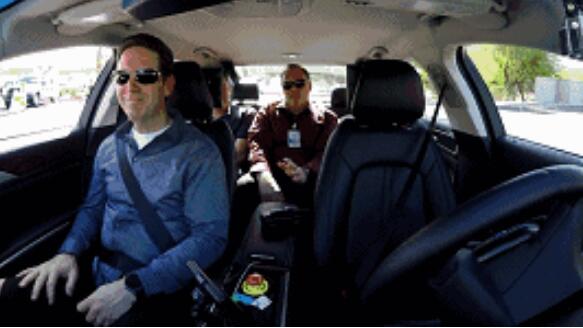For the past three decades, I have climbed out of bed every morning and went to work for Intel. But for more than 30 years, I have never been as excited as I am now because I am leading the Intel driverless team. Don't get me wrong - my career is absolutely wonderful and I'm involved in many projects that have a major impact on the world. But what I am trying to solve now is one of the most complex technical challenges of the moment: it may help the automotive industry reshape traffic, and it may save millions of lives every year – these are different from anything we did before. This is why I postpone retirement. I firmly believe that Intel will succeed in the driverless field. We have extensive and deep experience and the world's most advanced technology tools needed to solve this challenge. We have integrated the resources of the entire company and recruited experienced talent from the automotive industry. Our team is working hard to break through the necessary technical challenges. Here are the reasons: Dai Weisen, senior vice president and general manager of Intel Corporation, gave a wonderful speech at the Intel Driverless Symposium First: We have made extraordinary progress. Intel technology has been applied to hundreds of driverless cars that are undergoing road tests. But not all automakers will reveal who provided the brains for their test cars, lest they reveal secrets. In fact, many car manufacturers have adopted Intel technology. Everyone is welcome to open their trunks, trunks or back covers to see which technology companies they rely on to provide the strongest brain for their developing cars. As promised by BMW, Intel and Mobileye, today we also showcased one of the first 40 highly automated driving (HAD) vehicles. Less than a year ago, the three companies announced plans to achieve mass production of highly integrated driverless cars by 2021 through the development of a common platform. We are now successfully demonstrating this platform and now plan to offer this platform to other OEMs and Tier 1 suppliers to accelerate their projects. Second: We are ready for the data challenge. Data is the most important element of driverlessness – how to maximize the processing, management, movement, storage, sharing and learning of data. From the PC to the data center and in the middle, no company's chips can match Intel's size in terms of analytics, computing and mobile data. As we continue to move toward driverless cars, data challenges will become more complex and require new ways to handle data in cars, networks, and the cloud. To ensure that we have the right strategy to deal with data challenges, we have deployed the first few data centers specifically for driverless. These unique laboratories are used for algorithm development and training, as well as for understanding the special infrastructure needs of unmanned data movement and storage. Researchers will continue to provide information from Intel test cars to these data centers to train neural networks and improve machine learning algorithms. In addition, we are actively building related laboratories with our customers and partners. This made me have to mention artificial intelligence. Mastering artificial intelligence in cars and data centers is critical to solving unmanned data challenges. You have to remember: driverless is not a game. When cars think and act without human intervention, they must be safe and reliable. The artificial intelligence required is not just computer vision – but also voice, decision making, personalization, and preferences. Each artificial intelligence workload requires a different algorithm and possibly different processing methods to achieve optimal performance. If all we need is a supercomputer that handles the driverless data challenge, then this work is done. Third: We have created many huge industries and will create miracles again. I have said that when the entire industry pushes together the development of common platforms and technologies, driverless technology will accelerate. This allows developers to quickly perform large-scale operations while enabling differentiated software solutions. Why do I say that? Let's take the PC and server industries as an example: Prior to 1980, the computer industry was highly proprietary, serving researchers, large corporations and enthusiasts. The situation changed after IBM developed the first personal computer with existing parts and outsourced operating systems a few years later. These early PCs were not only the basis for standardization of computer design, but also accelerated the evolution of technology, eventually achieving a 150-fold increase in 20 years. The data center is similar. Microcomputers that emerged after the mainframe increased flexibility and cost efficiency. But using PC technology makes the data center evolve rapidly and can handle the data brought by the Internet. IDC said that it produced 1.8ZB of data in 2011 and expects to generate more than 40ZB of data by 2020. Only through standardized solutions can we keep the development of the industry up to date. Let's go back to the field of driverless cars. Many people who like to sing the opposite tone think that Intel's experience in achieving rapid expansion cannot be replicated in the driverless field. At the same time, many people in the automotive industry do not understand how open cooperation can achieve differentiation and innovation. I understand this question, but based on years of experience, I know that a common platform and predictable interface organization technology can solve problems very effectively. There is no doubt that this is the fastest way to drive unmanned driving forward. For the whole society, I don't think we can continue on the road of exclusiveness. Time, money and labor costs are too high. The faster the popular driverless technology, the faster people get out of the driver's seat, and we can save lives faster, so simple and important. I believe that Intel will not only successfully help partners launch unmanned vehicles, but also in the fastest and most intelligent way. Lgf Membrane Switches,Control Panel Lgf Membrane Switches,Lgf Membrane Switches Keypad,Lgf Membrane Key Switch Panel KEDA MEMBRANE TECHNOLOGY CO., LTD , https://www.kedamembrane.com

